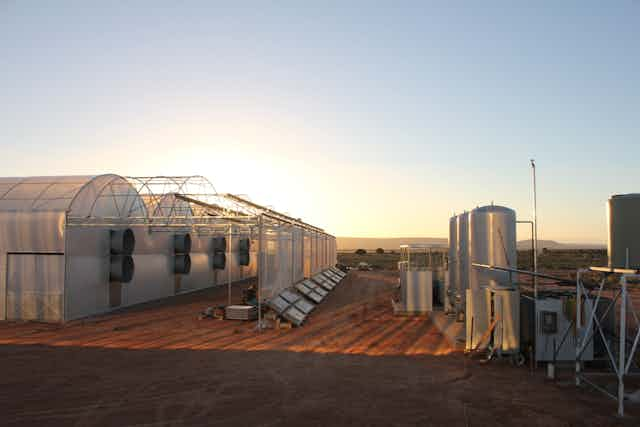This week, the Australian Senate is considering the government’s package of “carbon tax” abolition bills – bills abolishing the carbon tax, the Climate Change Authority (CCA) and the Clean Energy Finance Corporation (CEFC).
The Senate’s first move was to hold hearings on the abolition of the CCA and CEFC, and to split them off from the rest of proposed legislation. This was a first victory for a combined Greens and Labor vote in the Senate, signalling that the new Abbott government will not have an easy task in dismantling these structures.
Defending the role of the CEFC is not just playing politics. In its short life, the corporation has already demonstrated an impressive track record in financing investment in new, green and cleantech projects throughout Australia. It is attracting significant investment into the sector – capital that would not be appearing without it.
There is a looming debate over the efficacy of the CEFC, with room for rational argument from both sides.
The case brought by Environment Minister Greg Hunt is basically that the CEFC “crowds out” private investment; that it adds no “additionality” and simply funds what would be funded anyway. He says that it adds nothing new to what was already being achieved by the Renewable Energy Target. He also usually adds that its projects are “highly speculative” and that it is therefore putting public funds at risk.
Minister Hunt was making these points again on Tuesday at the Carbon Expo conference in Melbourne – even after they had been thoroughly refuted by the CEFC in its submission to the Senate Inquiry the Senate Environment and Communications Committee launched last week.
How well do the Minister’s assertions stand up?
Far from crowding out private investment in renewables and cleantech projects, the CEFC has attracted A$2.90 from private funds for every A$1 it has invested in projects. In this way the CEFC has been able to catalyze over A$1.55 billion in non-CEFC funding for renewables and clean tech projects. These funds would otherwise not have been made available.
The problem facing most renewable energy projects is that financial institutions are too conservative to back their projects. But if a project is “proofed” by the CEFC then it becomes much more attractive to conventional finance.
A good example of this is the visionary Sundrops Farms project in Port Augusta, South Australia. Here, sunlight and seawater are being turned into food, fresh water and energy, using greenhouses and thermal solar arrays.
Each part of this project uses established technology. But no one had put it together in quite this form, quite literally greening the desert.
The founders of this project were having a hard time finding adequate finance to scale up until the CEFC provided support. They co-financed the project’s expansion to 20 hectares of greenhouse operations, producing over 15,000 tonnes of tomatoes and other fresh produce for metropolitan markets across Australia.
This project is a world leader and already attracting emulators such as the Desert Forest projects in the Middle East.
As for whether the CEFC has been indulging in “speculative” investments, it is remarkable that of all its investments so far, not one has collapsed. This is a rate of success far higher than for conventional banks or venture capitalists.
The CEFC argues they are acting to help Australian firms access the potentially enormous cleantech markets that are emerging out of investments made by China, India, Japan and Germany in these advanced energy and clean technologies.
This is the successor industry to the fossil fuel industry of the 20th century. Countries will only be able to become players if they have smart financial institutions - such as the CEFC - that play a catalytic role.
What the Minister’s arguments ignore is that these cleantech industries are the sectors with a great future, particularly in our part of the world. Singapore – ever a bell-wether for the major trends in the global economy – has already recognised this, and is now actively promoting its Cleantech One technology park. It is offering incentives to foreign firms to establish their eco-operations on the island, to service markets throughout SEAsia.
There is already considerable business support behind the CEFC. Its chair is Jillian Broadbent, a former member of the Board of the Reserve Bank. The CEO is Oliver Yates, formerly of Macquarie Bank. This business support speaks to the fact that the CEFC is serving a real need, and is likely to be far more effective in building investment in a green sector in Australia than anything else – including a carbon tax.
It was distressing to see so much argument and political capital expended in Australia over the issue of a carbon tax, when the reality is that market-based disincentives like taxes are known to have very little impact in changing investment patterns. (Market-based incentives on the other hand, such as payments to farmers in China not to plant crops on steeply sloping lands, have been very successful.)
After all, it is a matter of record that railways did not succeed because of a tax on canals; nor PC-based word processors come of age through a tax on typewriters.
These world-historic transitions (of which the transition to green energy and cleantech is the latest manifestation) are blocked by incumbents and their vested interests. The transition is achieved only if there is financial pump-priming so that the new and cheaper technologies can be allowed to prove themselves.
One hopes Minister Hunt will come to see the merits of this argument, and perhaps adopt the CEFC - as if it were he who invented it - as part of his Direct Action package. For this is what it’s a true example of - Direct Action - in a shape and form that is actually working well.

